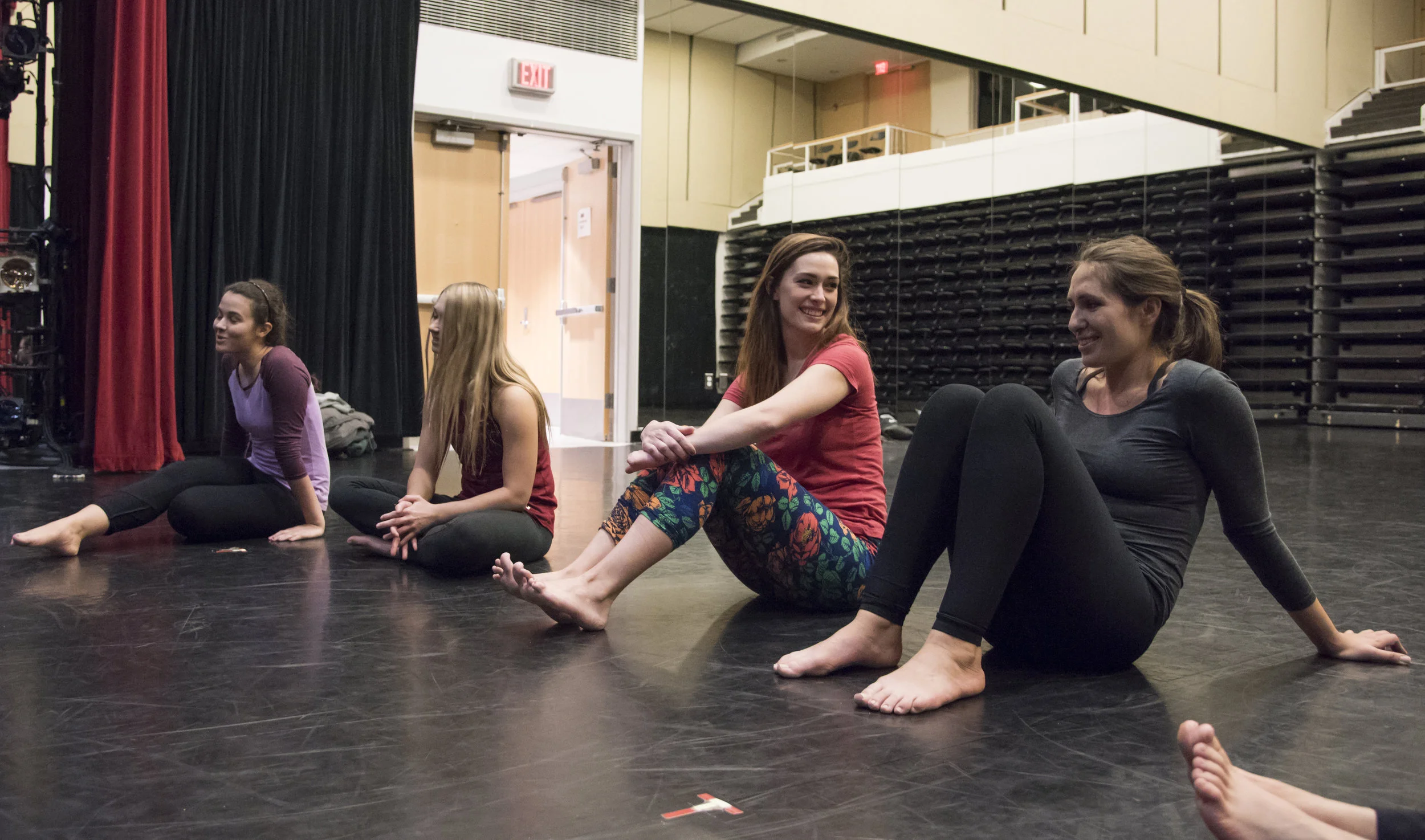
Sarah Tuberty talks to her friend before the start of the weekly aerial dance class she takes at Boston University's Fitness and Recreation Center.
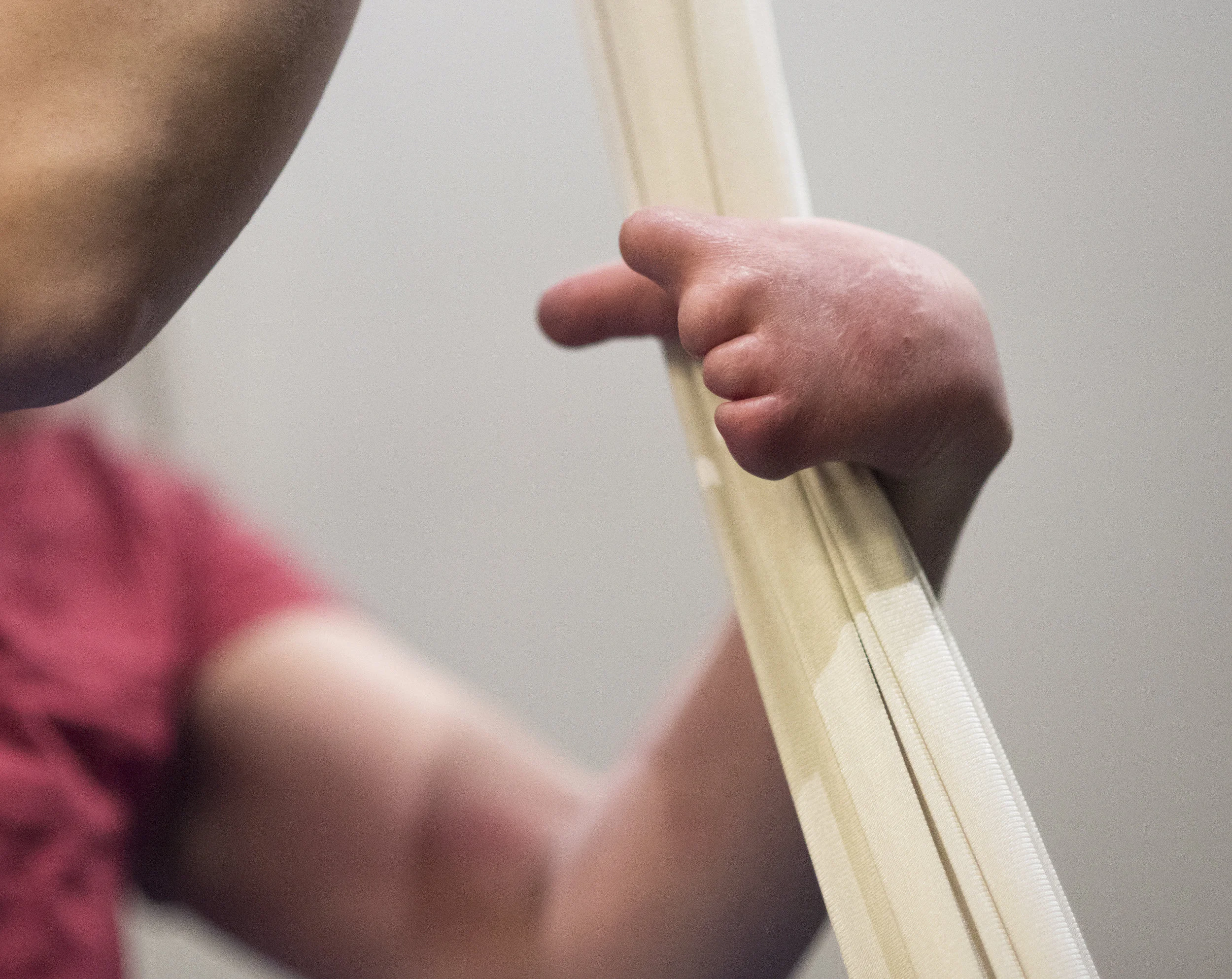
Sarah Tuberty was born with Symbrachydactyly, a congenital abnormality caused by blood clotting in utero. Tuberty has limited use of her left hand (pictured), which has no fingers with the exception of a non-opposable thumb and typically uses her left wrist to grip the silks during aerial moves.
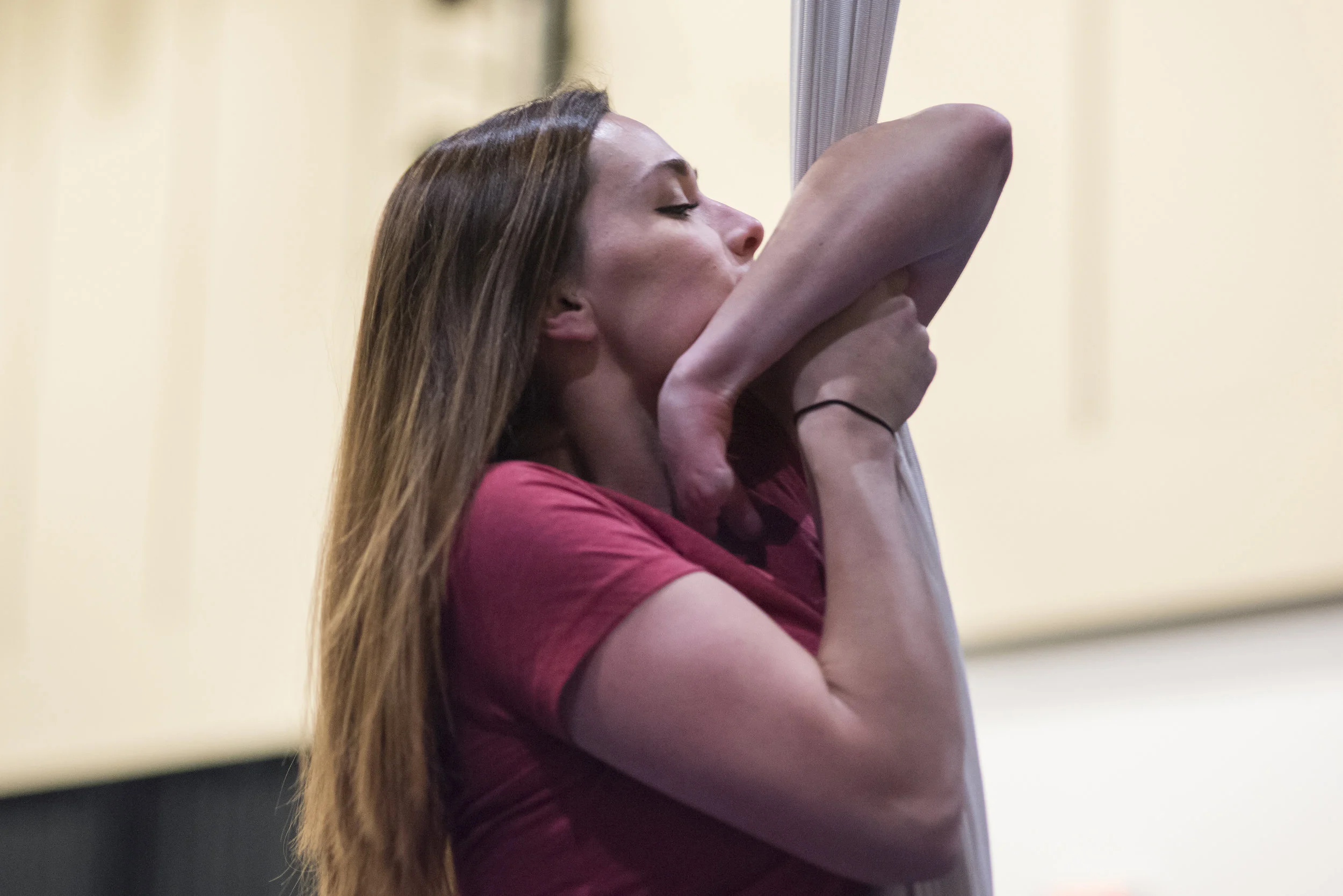
Sarah Tuberty, a graduate student in Boston University's Sargent College, climbs the fabric during a weekly aerial dance class held at BU. Tuberty was born with Symbrachydactyly, a congenital abnormality leaving her with no fingers on her left hand other than a semi-operable thumb.
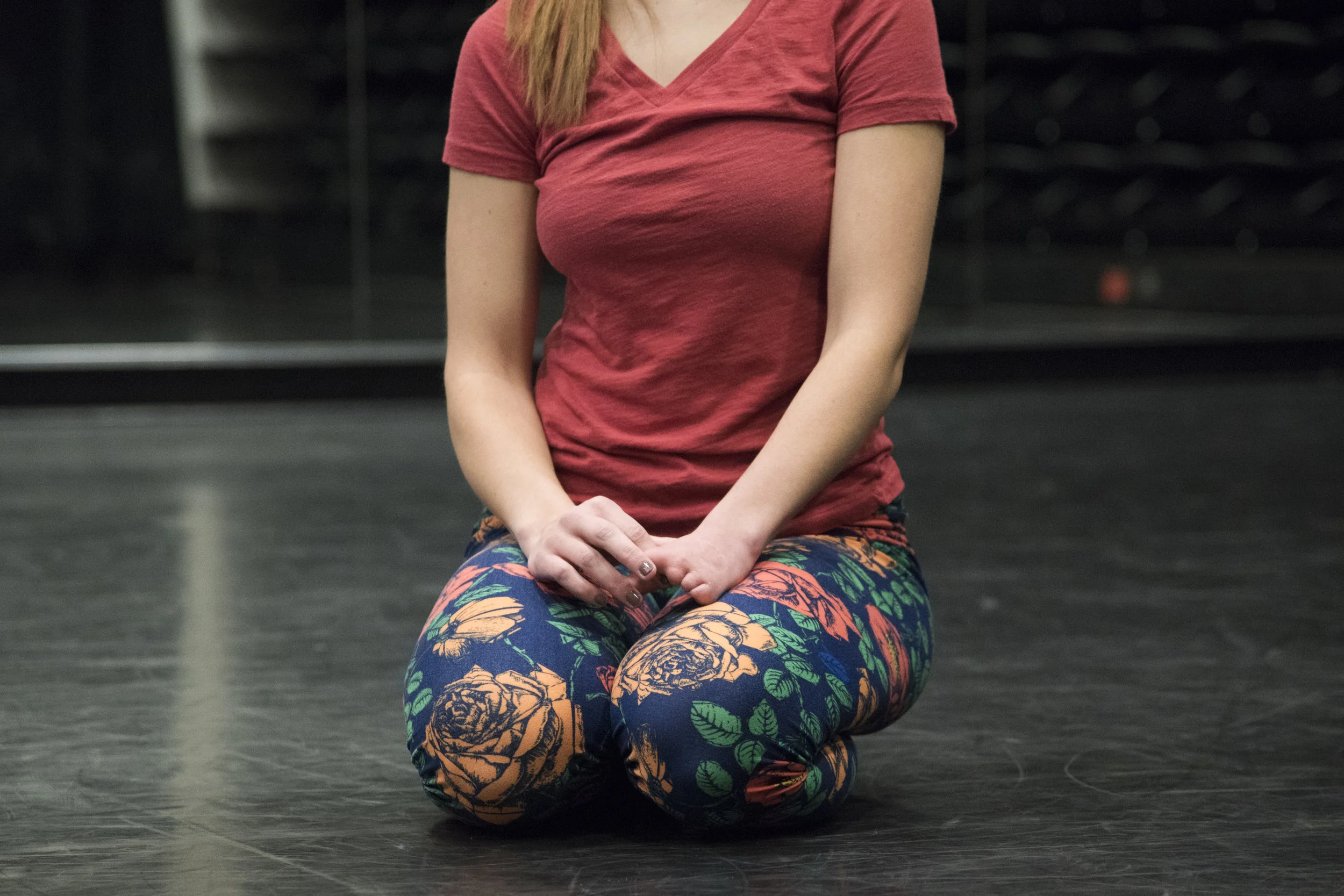
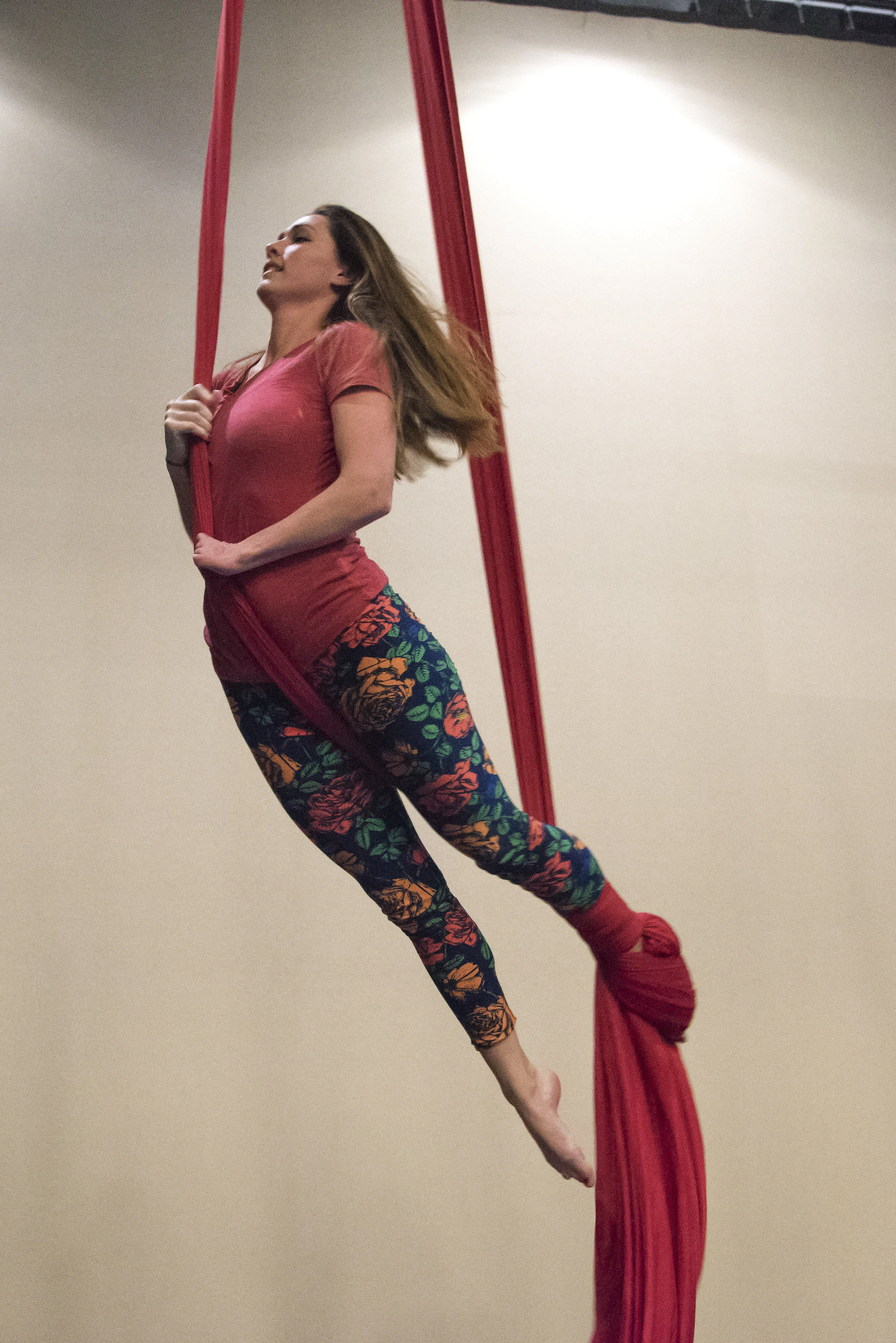
Sarah Tuberty performs a peppermint wrap, one of the first silks moves students learn in a beginner aerial class. Unlike other students, Tuberty must find new and different ways to approach aerial moves in order to accomodate the extremely limited use of her left hand. Part of the reason she chose to take aerial dance was because of the flexible nature of the aerial silks apparatus. "I thought that the silks would be more forgiving," she said.
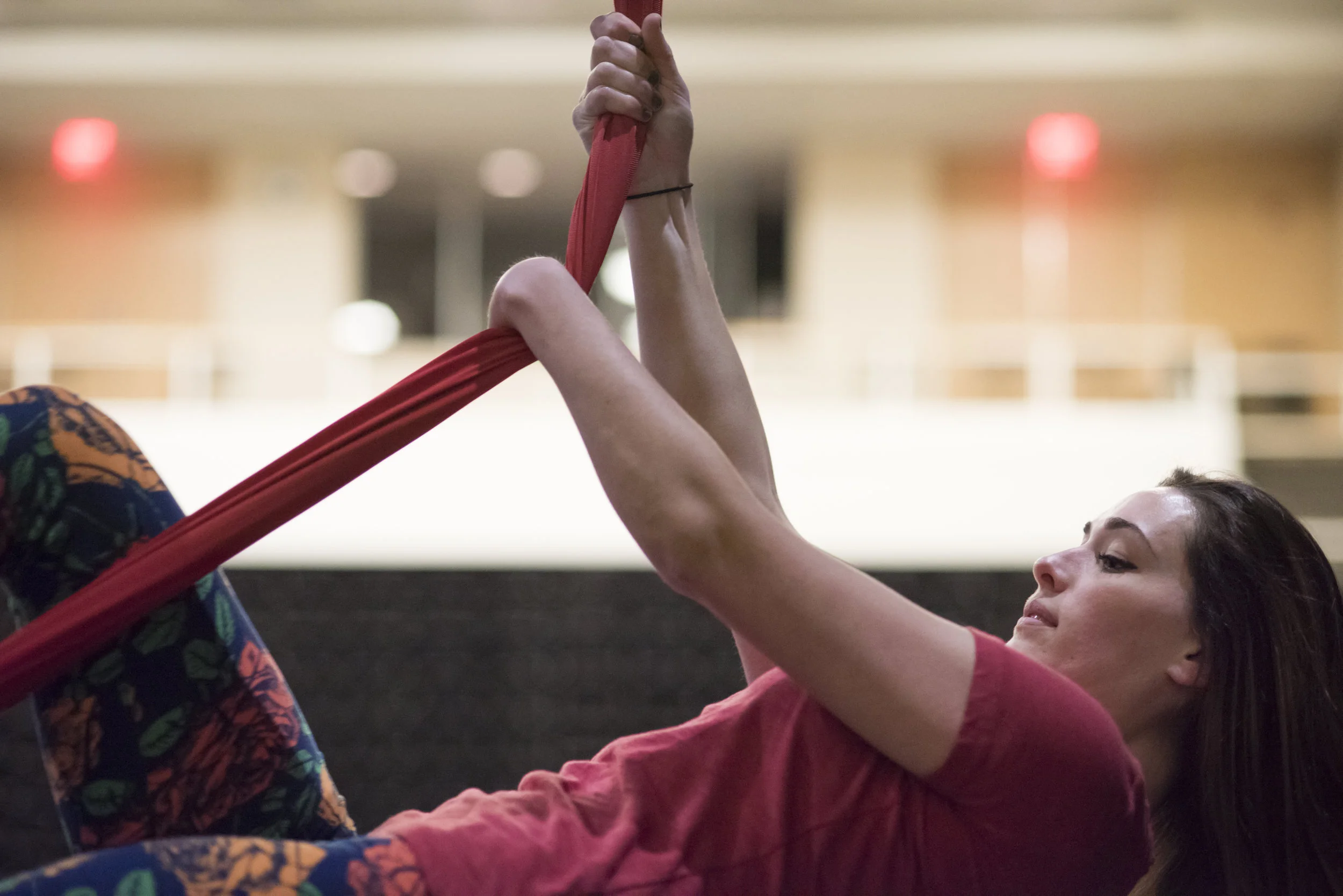
In order to perform certain aerial moves that typically require hand grip, Sarah Tuberty makes use of her left wrist in order to hold herself in a hanging position. To Tuberty, Symbrachydactyly isn't an obstacle as much as it is a challenge to be overcome and worked around. "It's all about finding those extra steps; those ways to support myself while still being safe and still able to do the different things," she said.






Sarah Tuberty talks to her friend before the start of the weekly aerial dance class she takes at Boston University's Fitness and Recreation Center.
Sarah Tuberty was born with Symbrachydactyly, a congenital abnormality caused by blood clotting in utero. Tuberty has limited use of her left hand (pictured), which has no fingers with the exception of a non-opposable thumb and typically uses her left wrist to grip the silks during aerial moves.
Sarah Tuberty, a graduate student in Boston University's Sargent College, climbs the fabric during a weekly aerial dance class held at BU. Tuberty was born with Symbrachydactyly, a congenital abnormality leaving her with no fingers on her left hand other than a semi-operable thumb.
Sarah Tuberty performs a peppermint wrap, one of the first silks moves students learn in a beginner aerial class. Unlike other students, Tuberty must find new and different ways to approach aerial moves in order to accomodate the extremely limited use of her left hand. Part of the reason she chose to take aerial dance was because of the flexible nature of the aerial silks apparatus. "I thought that the silks would be more forgiving," she said.
In order to perform certain aerial moves that typically require hand grip, Sarah Tuberty makes use of her left wrist in order to hold herself in a hanging position. To Tuberty, Symbrachydactyly isn't an obstacle as much as it is a challenge to be overcome and worked around. "It's all about finding those extra steps; those ways to support myself while still being safe and still able to do the different things," she said.